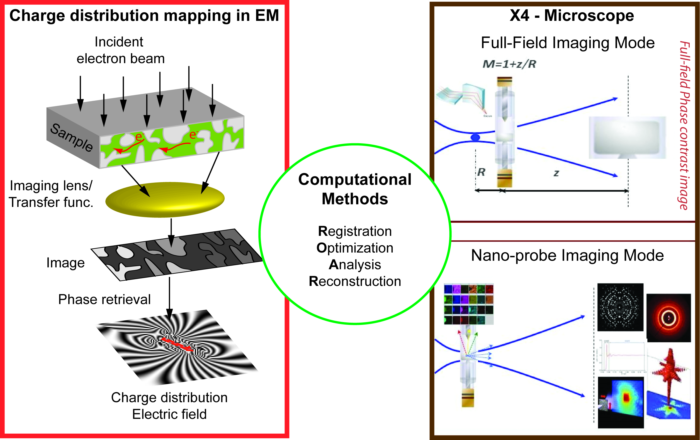Project goals
Li-ion batteries (LIB) have had a remarkable effect on the adoption of portable electronic devices. Improving batteries requires understanding the interaction of many materials at multiple length scales, ranging from micro (structure of various components, transport of ions/charge) to nano (electronic interactions, local charge accumulation).
To address this challenge, we propose to investigate battery materials using a combination of electron microscopy and X-ray microscopy. Our goal is to integrate the data from each “modality” using the computational imaging tools that will be developed within this project. This will allow us to understand the nano to microscale evolution of change in the material as a function of electrochemical cycling. The scientific knowledge obtained in this research will help create pathways for breakthroughs in design of battery electrodes.
Project Details
We propose to efficiently combine structural and chemical imaging and data analysis from X-ray projection microscope (XPM) - based X4 microscope with complementary charge distribution and electric field mapping obtained from transmission electron microscopy (TEM) using a robust computational framework. This is schematically shown in the figure.
We will employ these techniques to study the plating and stripping of metal anode materials and lithium-ion intercalation cathode materials, that are of interest to the Argonne battery program and the Joint Center for Energy Storage Research Hub.
Methodology
We will use the full-field as well as nano-probe imaging mode of the XPM to obtain 3D structural as well as chemical data from the cathode materials.
We will use phase retrieval based TEM data to obtain information about the local charge density accumulation and electric field variation.
We will develop improved computational methods based on probability theory for faster and reliable analysis, reconstruction, and correlation of multi-dimensional micro and nano scale datasets. These generic methods will be applicable both to XPM as well as TEM data.
- Project Contact
- Doga Gursoy
- People Involved
- Charudatta Phatak
- Xianghui Xiao
- Other Contributors
- Begum Gulsoy (Northwestern University)
